Palmetto bugs and cockroaches are sometimes being used interchangeably to describe roaches. Some people believe that these two insects are exactly the same, while others claim that they belong to different roach species.
But one thing is for sure; both are notorious household pests and can lead to an infestation.
What’s the difference between palmetto bugs and cockroaches? There is no big difference between palmetto bugs and cockroaches. Palmetto bugs are referred to as large roach species that are mostly found in Palmetto State, which is the official nickname for South Carolina. American cockroaches are Palmetto bugs.
Palmetto bugs got their name from Palmetto State, which is known for their Palmetto tree, a variety of palm trees that these roaches love to live in.
These bugs are usually found indoors and outdoors in the Southeast region, particularly in South Carolina and Florida. This guide explains everything you need to know.
Table of Contents
Are Palmetto Bugs the Same as Cockroaches?
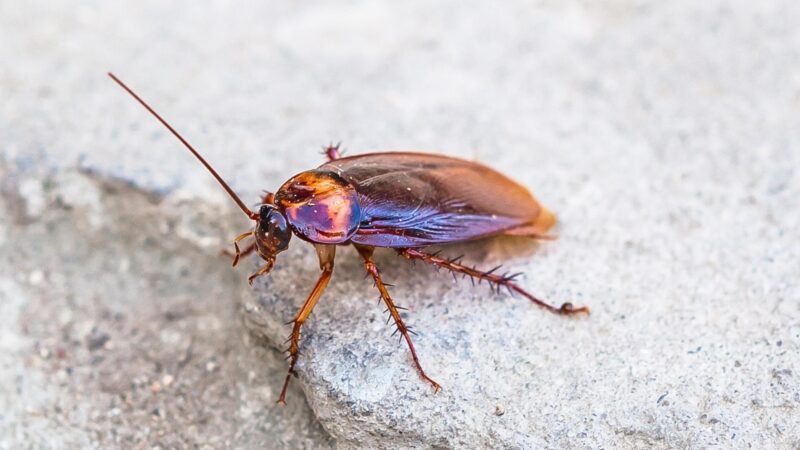
Palmetto bugs are the same as cockroaches. Other common names for roaches are water bugs and croton bugs. All palmetto bugs are roaches, but not all roaches are palmetto bugs.
To avoid confusion, they are the bigger species of roaches. The most common palmetto bugs are the American cockroaches.
What Is a Palmetto Bug?
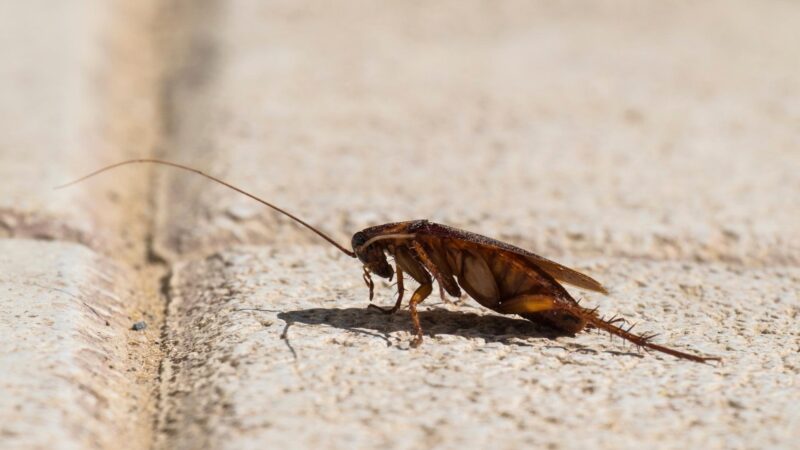
A palmetto bug is described as a huge cockroach that is frequently found living around human habitats. Among them are the Smokybrown cockroach (Periplaneta fuliginosa), Florida woods cockroach or skunk roach (Eurycotis floridana), and the American cockroach (Periplaneta Americana), which is the most common.
Technically speaking, palmetto bug is only a regional term for large cockroaches. German cockroaches are not palmetto bugs since they are small. They are only about 1/2 inches long, while Florida woods cockroaches are 1.20 – 1.60 inches (30-40 mm) long. Meanwhile, American cockroaches are 1-1/2 to 2 inches long.
Palmetto Bugs | Behaviors and Habitats
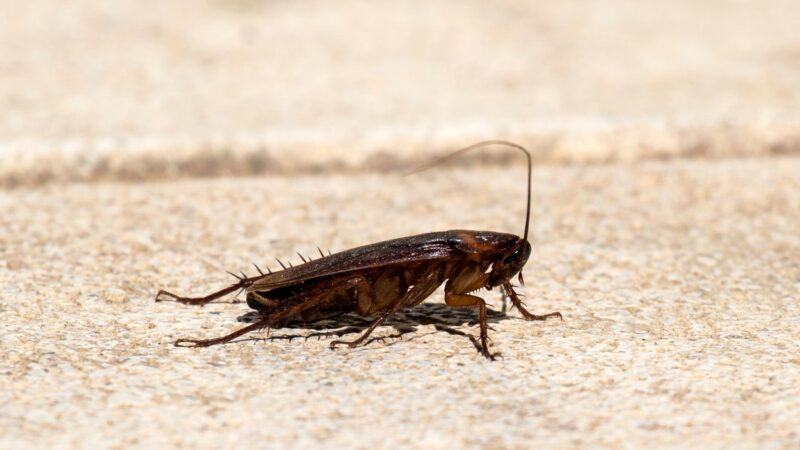
Generally speaking, all palmetto bugs prefer warm, moist, and humid areas, usually with temperatures above 82°F (27.7°C). They are outdoor pests and are mostly found in decaying trees, hollow trees, palm trees, wood piles, mulch, sewer systems, storm drains, water meter boxes, and wet, shady areas in yards.
Under ideal conditions, palmetto bugs can also live indoors. This includes bakeries, grocery stores, and restaurants, especially in food storage and preparation areas. Using their flattened bodies, they also enter houses through wall cracks, damaged window screens and pipes, and faulty drain water traps.
Palmetto bugs are nocturnal insects, which means they are most active at night. During the day, these cockroaches hide in groups in the dark areas in attics, chimneys, basements, bathrooms, and kitchens. This includes plumbing fixtures, under the sinks and drawers, and cracks and crevices in cupboards.
Most palmetto bugs have well-developed wings, but they rarely fly, even if they are disturbed. Instead, they run as fast as they can. Adults can survive within two to three months without food, but they may die in a month without water. On the other hand, American cockroaches multiply slower than German cockroaches.
What Do Palmetto Bugs Eat?
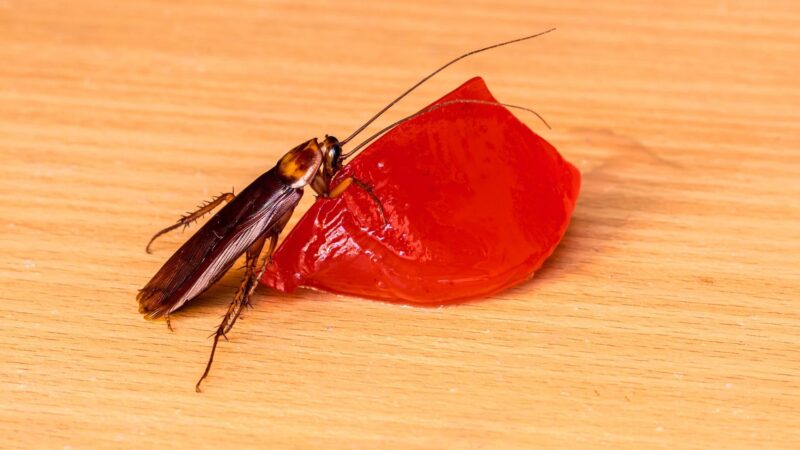
Palmetto bugs feed on almost everything except metal. They eat organic matter such as paper, bookbinding, leather, wallpaper paste, skin flakes, as well as animal and human waste.
Roaches also eat human food, including baked goods, starchy foods, sweets, and meat. In short, cockroaches are not picky eaters.
What Attracts Palmetto Bugs?
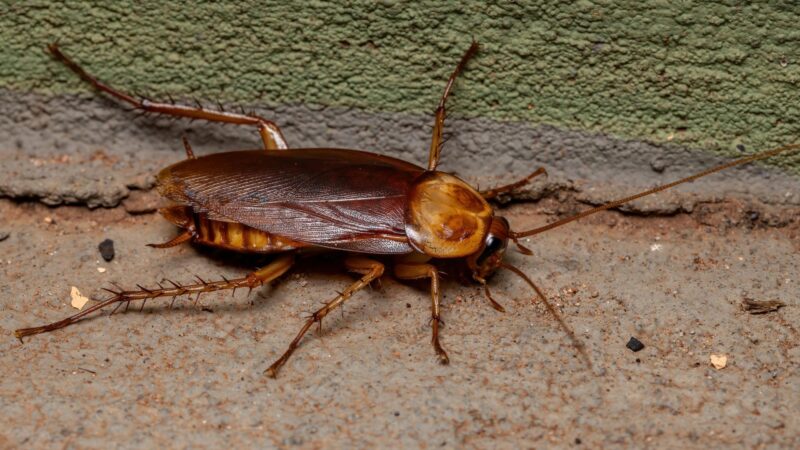
Just like other roach species, palmetto bugs are generally very attracted to moisture since they need lots of water to survive. This is also why you can have cockroaches in your house even if it is always clean.
They also love the smell of sweets, sugar, and fermenting liquid such as bread that is saturated with beer.
Palmetto bugs avoid outdoor lights, but there is a particular roach species that are attracted to it. Scientifically known as Parcoblatta pennsylvanic, wood cockroaches are attracted to lights.
They are usually mistaken for American cockroaches since they have almost the same size but are excellent fliers.
Are Palmetto Bugs Dangerous?
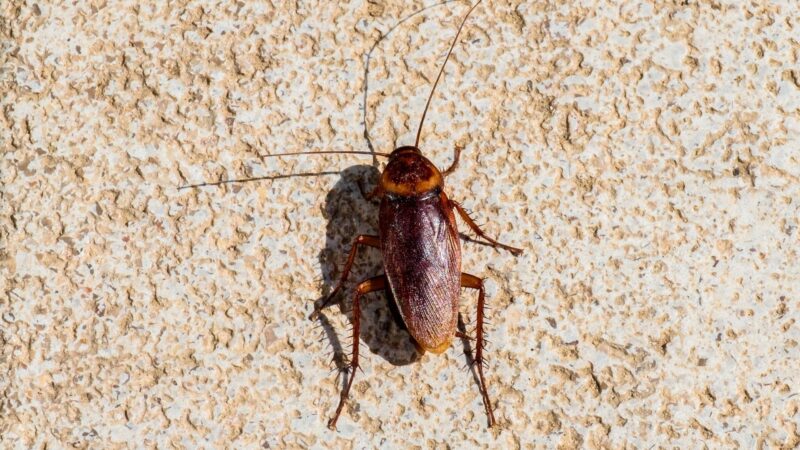
Palmetto bugs are dangerous. They rarely bite humans, but since they eat human waste, these roaches carry pathogenic microbes that can cause food poisoning, diarrhea, or dysentery.
These disease-causing organisms are carried on their bodies and legs and can contaminate not only food but utensils as well.
Palmetto bugs also produce allergens that can cause childhood asthma. Their feces and cast skins can lead to allergic reactions such as watery eyes, nasal congestion, sneezing, and skin rashes.
During severe infestations, roaches produce odorous secretions that can affect the taste of different kinds of food.
How Do You Kill Palmetto Bugs?
Palmetto bugs are very quick in hiding and can easily squeeze their flat bodies through very tiny gaps and spaces. This makes them harder to find and get rid of.
Therefore, you might want to use different strategies in eliminating them. Here are some effective ways to kill palmetto bugs to avoid a potential infestation:
1. Vacuum Them
Vacuuming does not kill cockroaches but can damage their exoskeletons or injure them. To make sure they are dead, use a bagless vacuum cleaner and put soap and water before using it. To help contain cockroach debris, use a vacuum cleaner with a HEPA filter such as Hoover Windtunnel Upright Vacuum Cleaner.
2. Use Sticky Traps With Bait
You can make DIY (Do-it-yourself) sticky traps using duct tape and peanut butter or anything sweet as bait. For better results, use Catchmaster 72MAX Pest Trap. Place them around areas where you see palmetto bugs. The position of the trapped roaches will also help you identify where they are coming from.
3. Apply Diatomaceous Earth (DE)
Diatomaceous Earth (DE) kills cockroaches on contact by destroying their exoskeletons, which causes them to die of dehydration. However, heavy applications can cause them to escape, so apply light amounts only. DE is non-toxic, but it can irritate your skin, eyes, and nose once you inhale huge amounts.
4. Sprinkle Boric Acid Powder
Boric acid is considered safer than Diatomaceous earth because it is less toxic. It is more effective than DE since its potency can last indefinitely. To make the boric acid powder more effective, add some sugar to it. In doing so, roaches will bring the mixture to their comrades, which means more of them will get killed.
5. Use Bleach
Bleach kills palmetto bugs and disinfects the area as well. Roaches also hate the smell of bleach, which means you can also use it as a roach repellent. However, bleach is not designed as an insecticide. It also poses a health risk and can damage pipes. Be very careful when using bleach, and don’t mix it with other cleaners.
Related: Will Pouring Bleach Down Drain Kill Cockroaches? | Information and Facts
How Do You Get Rid of Cockroaches Naturally?
Killing cockroaches does not necessarily mean you should always use insecticides. Aside from containing harsh ingredients, most of them have a limited effect.
Some of them should also be applied frequently to obtain positive results. Therefore, here are some effective ways to kill palmetto bugs naturally:
1. Kill Roaches With Heat
Roaches of all life stages cannot reproduce or grow and will die at temperatures above 115°F (46°C). Pour boiling water in their hideouts, and all of them will get killed. If an infested item or appliance can tolerate that temperature, place it inside an oven for a few hours, and all the Palmetto bugs inside will surely die.
2. Freeze Roaches to Death
Cold temperatures can also kill cockroaches. At temperatures of 45° F (7°C) and below, palmetto bugs can no longer reproduce. Once the temperature goes down at 14°F (-10°C), they will soon die. If you are using a vacuum cleaner with a bag to catch roaches, place the vacuum bag inside a freezer for several hours.
3. Eliminate Their Sources of Habitat
Palmetto bugs love to hide in cracks, crevices, and other tight spaces. They can be found on walls and floors. Inspect every corner of your house and seal those areas. Remove clutter inside and outside your house. Don’t stack unnecessary things such as old newspapers and bags. Stack firewood away from your house.
4. Eliminate Their Sources of Food
As mentioned earlier, palmetto bugs are not picky when it comes to choosing what to eat. Although they also don’t eat a lot, the presence of food attracts other roaches. Make sure your food (including pet food) is stored properly and leave no food debris in the kitchen or floor. Store and dispose of your garbage properly.
5. Reduce Their Sources of Water
For palmetto bugs, water is more important than food and shelter. Eliminating their source of water is almost impossible, but you can reduce it to the minimum. You can do this by replacing leaky pipes and faucets, removing standing water, and using a reliable dehumidifier such as Pro Breeze Electric Mini Dehumidifier.
What Should You About a Palmetto Bug Infestation?
In some cases, you might be surprised to know that there is already a palmetto bug infestation inside your home. This can happen no matter how many times you clean your house. There is no immediate solution to solve this problem, but there are some simple steps that you need to follow religiously. Here they are:
1. Locate the Infested Area
Using a flashlight, inspect the dark and hard-to-reach areas in your kitchen, bathroom attic, and garage. Aside from their presence, other signs of a roach infestation include damage on food packages, unpleasant odors, and seeing some roach feces. Sticky traps can also help you locate infested areas.
2. Control the Population From Growing
It’s not easy to kill all roaches during an infestation. But you can easily control the population by killing some of them or by preventing them from reproducing. Insect growth regulators (IGRs) such as ZOECON Gentrol Insect Growth Regulator don’t kill roaches but rather prevent them from becoming sexually mature.
3. Combine all possible solutions
There is no single method that is effective in solving a roach infestation. You need to try all the possible strategies mentioned above and monitor which of them is helping you better.
It will also help if you will caulk or seal all their potential points of entry and create or install a barrier around your house.
4. Hire a Professional Exterminator
If you have done everything, but the roaches still keep on reproducing, it does not necessarily mean that you are doing it all wrong. It only means that the situation is already beyond your control.
For a severe infestation, hire a professional exterminator who can easily evaluate the problem and knows exactly what to do.
Best Palmetto Bug Sprays
When used properly, insecticide sprays don’t only kill roaches but also help a lot in preventing an infestation. Commercial sprays are not permanent solutions in getting rid of cockroaches, but most of them offer a long-lasting residual effect.
So far, here are five of the best palmetto bug sprays available in the market today:
1. Ortho Home Defense Insect and Roach Killer Spray
Ortho Home Defense Insect and Roach Killer Spray is designed for both indoor and outdoor use. It kills not only cockroaches but other home-invading insects such as ants, fleas, and spiders. Aside from killing insects on contact, this product is also effective as a bug barrier around your house for up to one year.
2. Raid Ant and Roach Killer Spray
Raid has been a well-trusted brand for several decades in terms of insecticide sprays. The Raid Ant and Roach Killer Spray is only one of their proud products. This aerosol spray is made with essential oils such as lemongrass extract, which helps in giving a long-lasting effect. It is also less toxic to small children and pets.
3. Hot Shot Ant, Roach & Spider Killer Spray
Hot Shot Ant, Roach & Spider Killer Spray comes with a floral fragrance and does not leave a sticky residue. It kills insects on contacts and can be used both indoors and outdoors. Aside from palmetto bugs, this versatile insecticide is also effective in getting rid of carpet beetles, fleas, spiders, silverfish, and more.
4. Orange Guard Home Pest Control Spray
Orange Guard Home Pest Control Spray is made from orange peel extract and can be safely used as an indoor and outdoor insecticide and residual repellent. This EPA-registered water-based spray effectively kills ants, fleas, palmetto bugs, and silverfish on contact. It can also be used safely around pets and small children.
5. EcoLogic Ant and Roach Killer Spray
EcoLogic Ant and Roach Killer Spray contains lemongrass oil, which gives a not too strong but rather a pleasant mint scent. This aerosol spray is formulated with clove oil, cinnamon oil, and corn mint oil and is safe to use inside your home. But more importantly, it kills palmetto bugs and other insects on contact.
Note:
The cockroach sprays mentioned above are generally non-toxic and are safe around children and pets. But still, they can cause eye and nose irritation if huge amounts are inhaled. Read label instructions carefully and use only as intended.
Summary
Palmetto bugs or cockroaches, regardless of what you call them, are all disgusting and dangerous household pests. These creepy critters may also return even after successful fumigation has been conducted. The key to preventing them from coming back is continuous monitoring and immediate action.